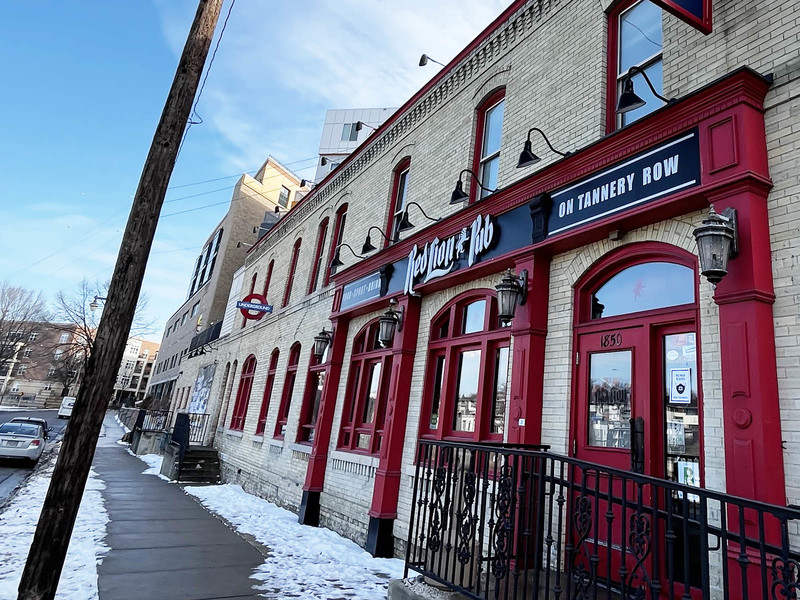Buildings come and buildings go. And the ones that stay with us for a long time rarely stay the same. Often we no longer notice additions and alterations undertaken decades ago, even when they’re executed in a variety of styles and voices.
A number of people have raved about the gorgeous auditorium in the equally stunning Public Service Building, 231 W. Michigan St., but not a single one thought to mention that this space is an art deco gem inside a beaux arts/classical revival masterpiece.
The building is part of a two-building WE Energies headquarters complex connected by a skywalk over Everett Street. It was heavily renovated in the 1990s, at which time a fifth floor, added in 1956, was removed.
Of course, when Herman Esser designed the building, which opened in 1905 as Downtown’s interurban passenger train depot for The Milwaukee Electric Railway and Light Co., the auditorium was decorated in the same ornate, with plaster garland on the balcony and pilasters soaring from floor to ceiling.
At the start of the 1940s, the PSB was, according to John Gurda’s "Path of a Pioneer: A Centennial History of the Wisconsin Electric Power Company," serving more passengers awaiting Greyhound buses were riding the rails. At the same time the auditorium was given a makeover in the art deco, or moderne, style, which was still in fashion.
During the war, the shiny new space was called into service as a center for USO dances, war production award ceremonies, draftee orientations and other events. These days, it is used mostly for WE Energies events and meetings, but is also used by outside groups like the Milwaukee Press Club, for functions.
Guests these days are greeted by rich wood doors with sleek bronze stripes before entering from the back of the room, in a low space beneath the balcony which runs the width of the auditorium.
The upper part of the walls are painted a creamy almond and are striped in turquoise and taupe. The lower section, from the floor to about seven feet up, are paneled in a blonde wood. There are decorative carved panels and flanking the stage is elaborate turquoise and bronze metal work.
The ceiling, with its attractive circular vents, is bisected lengthwise by a five or six foot wide plaster strip that is striped and decorated and draws the gaze straight up to the stage, above which the strip curves down to meet the curtains.
Turning back toward the entrance, gaze up toward the balcony and check out the silver and bronze art deco clock, tacked at all four corners by five-pointed stars. Even the women’s lounge in the auditorium is ornate, according to my tour guide. (It was in use during my visit so I didn’t get to see it.)
Not much else in the building matches the auditorium anymore, but there are plenty of fine details remaining. The lobby – which I’ve described previously here – has splendid tile work, a gorgeous fan window above the entry and marble throughout.
A former vault is now a coat room on the first floor and tile work, decorated with olive branches – looking like it’s straight out of Pompeii – can be seen inside, too. A pair of elevators boast patterned brass doors and a little further along on the main floor are supple, curved brass railings that trace a marble staircase to the lower level.
The main staircase in the center of the building is marble and brass and switches back on itself, offering Escher-like views from below and above.
Upstairs, former cashier windows (PSB used to sell appliances!) are preserved in the on-site credit union. Just outside the auditorium is an old ticket booth. Stained glass can be found upstairs, too.
What you won’t find anymore are the bowling alleys, indoor golf course, barber shop and billiard room that once existed here. Nor will you find tracks or the wide open platforms you’d expect in a building built as a station. All of that has been re-cast as office space for the roughly 500 WE Energies employees who have the pleasure of entering a real Milwaukee architectural and historical gem on a daily basis.
Born in Brooklyn, N.Y., where he lived until he was 17, Bobby received his BA-Mass Communications from UWM in 1989 and has lived in Walker's Point, Bay View, Enderis Park, South Milwaukee and on the East Side.
He has published three non-fiction books in Italy – including one about an event in Milwaukee history, which was published in the U.S. in autumn 2010. Four more books, all about Milwaukee, have been published by The History Press.
With his most recent band, The Yell Leaders, Bobby released four LPs and had a songs featured in episodes of TV's "Party of Five" and "Dawson's Creek," and films in Japan, South America and the U.S. The Yell Leaders were named the best unsigned band in their region by VH-1 as part of its Rock Across America 1998 Tour. Most recently, the band contributed tracks to a UK vinyl/CD tribute to the Redskins and collaborated on a track with Italian novelist Enrico Remmert.
He's produced three installments of the "OMCD" series of local music compilations for OnMilwaukee.com and in 2007 produced a CD of Italian music and poetry.
In 2005, he was awarded the City of Asti's (Italy) Journalism Prize for his work focusing on that area. He has also won awards from the Milwaukee Press Club.
He has be heard on 88Nine Radio Milwaukee talking about his "Urban Spelunking" series of stories, in that station's most popular podcast.







